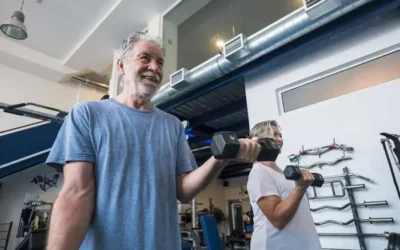
Do you dream of being that runner where every step of every mile is 100% pain free? No aches, no twinges or niggles, no lingering soreness from yesterday’s session. Well, you are not alone; research shows that as many as 79% of runners get injured at least once during the year. Stop. Think about that number for a moment; that is nearly 8 out of every 10 runners you see at your next race that have been or will be injured at some point that year.
Now think of running pains in terms of a spectrum. At one end you have more significant, full-blown injuries, for the purposes of simplification let’s call this group of injuries the red zone, which includes stress fractures and other injuries that require a longer period of time out from running. The other end, where you’re in top form, is the green zone. Mild, transient aches that bug you one day and disappear the next sit closer to the green end.
Unfortunately, many runners get stuck in the middle, in the not-quite-injured but not-quite-healthy yellow zone. Your ability to stay in the green zone depends largely on how you react to that first stab of pain. Often a little rest now, or reduction in training mileage and intensity, with some treatment, can prevent a lot of time off later. Developing a proactive long-term injury-prevention strategy, such as consistent strength training, stretching, and regular massage can help keep you in the ‘green.’
Strength and conditioning is a lot like homework, not all of us like having to do it, but if you don’t do it, you’re more likely to get injured at some stage! You can find more information and exercise leaflets for injury prevention at this link.
So, What Causes Running Injuries?
There are a lot of theories as to what causes running injuries but it seems the answer is fairly obvious: running! Research has stated that “running practice is a necessary cause for RRI (Running Related Injury) and, in fact, the only necessary cause.” With running volume being the key risk factor for running injuries what other factors influence risk? Historically a lot of emphasis was placed on intrinsic factors like leg length discrepancy, pronation (flat foot), high arches, genu valgus/varum (knock knee or bow legged) and extrinsic factors like ‘special’ running shoes being stability shoes or anti-pronation shoes, lack of stretching. However, recent studies have shown there is no one specific risk factor that has a direct cause-effect relationship with injury rate or injury prevention. Whilst warming up, compression garments and massage have some evidence in reducing injury rates it is all a little grey. Leaving you with a multifactorial buffet of probable contributing causes to running injuries.
There is however one specific factor that has been proven, and that is training error. Estimates suggest that anywhere from 60 to as much as 80% of running injuries are due to training errors. Runners become injured when they exceed their tissues capacity to tolerate load. A combination of overloading with inadequate recovery time. Poorly perfused tissues, such as ligaments, tendons and cartilage, are particularly at risk because they adapt more slowly than muscles to increased mechanical load.
Factors that affect how much training load a runner can tolerate before injury will also have a role. There are 2 key factors that appear to play a part in this – Body composition (ie obesity, I personally dislike the BMI measurement but that is another blog article!) and history of previous injury, especially in the last 12 months. While high body fat and previous injury may reduce the amount of running your body can manage, strength and conditioning is likely to increase it. There is a growing body of evidence supporting the use of strength training to reduce injury risk and improve performance. Training error and injury risk share a complex relationship – it may not be that total running mileage on its own is key but how quickly this increases, hill and speed training. The old saying of “too much, too soon” has an accurate foundation. Injury prevention is really a ‘mirror image’ of the causes of an injury. So, if you understand the primary reasons for getting injured then you are heading in the right direction to staying healthy this running season. You can find out more on injury prevention, with recommended exercise leaflets, at the following link.
We have produced a series of prevention and treatment guides for the 6 most common running injuries which you can download here (https://bit.ly/2RReXDw)

What are The Most Common Injuries to be Aware of?
Body tissues such as muscles and tendons are continuously stressed and repaired on a daily basis, as a result of both ‘normal’ functional activities and sport. An overuse injury often occurs when a specific tissue fails to repair in the time available, begins to breakdown initially at microscopic level and then over time develops into a true injury. So, the first time you feel a soreness, a stiffness or a pain is not necessarily when it all began.
The most common injury is ‘runners knee’ or patellofemoral pain syndrome and accounts for over 40% of running injuries. This is followed closely by plantar fasciitis, achilles tendinopathy and then ITB (iliotibial band syndrome), shin splints and hamstring strain. These injuries generally need a rehabilitation plan and may include a reduction in training volume and intensity. A sports physiotherapist will help you identify the driving factor behind your issue and help you to promote tissue healing and mobility in the relevant structures. Although these are overuse injuries there is frequently an underlying muscle weakness and/or flexibility issue that needs to be addressed with specific rehabilitation exercises.
Follow this link to find more specific information about each of the most common running injuries with specific rehabilitation leaflets for you to use.
You can find our prevention and treatment guides for the following running injuries at this link:
- Medial tibial stress syndrome (shin splints)
- Patellofemoral pain (runner’s knee)
- Achilles tendinopathy
- Plantar fasciitis
- Hamstring strains
- Iliotibial band syndrome
While guidance can be given, it is general in its nature, whereas individual complaints may need individual attention. If you do pick up an injury (including ‘tightness’ ‘irritation’ or ‘niggle’) that you’re worried about then we can help, the sooner it’s treated the better.
Steven McLean
Head Physiotherapist
Optimal Physio
0333 3010205
Book online at optimalphysio.co.uk



0 Comments